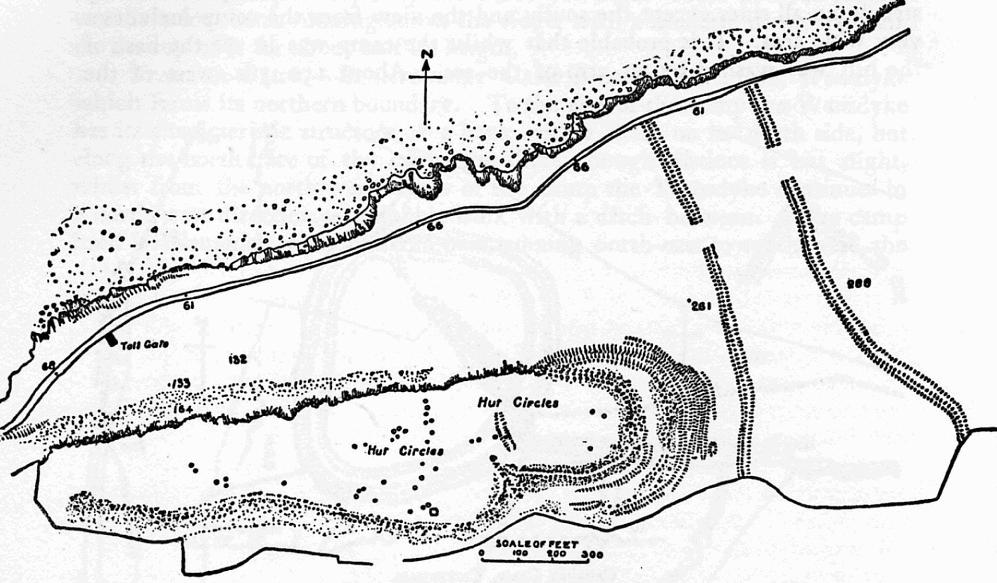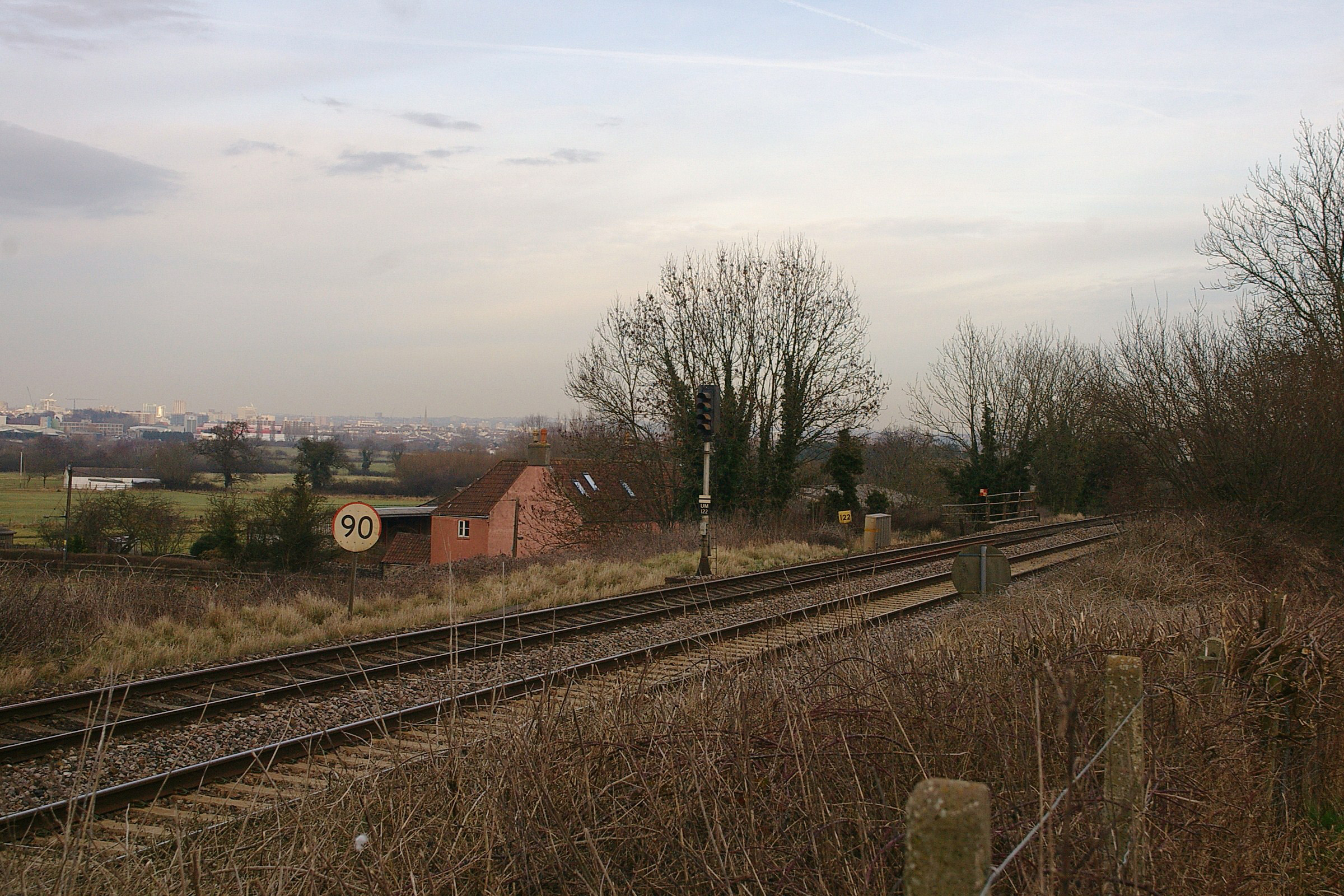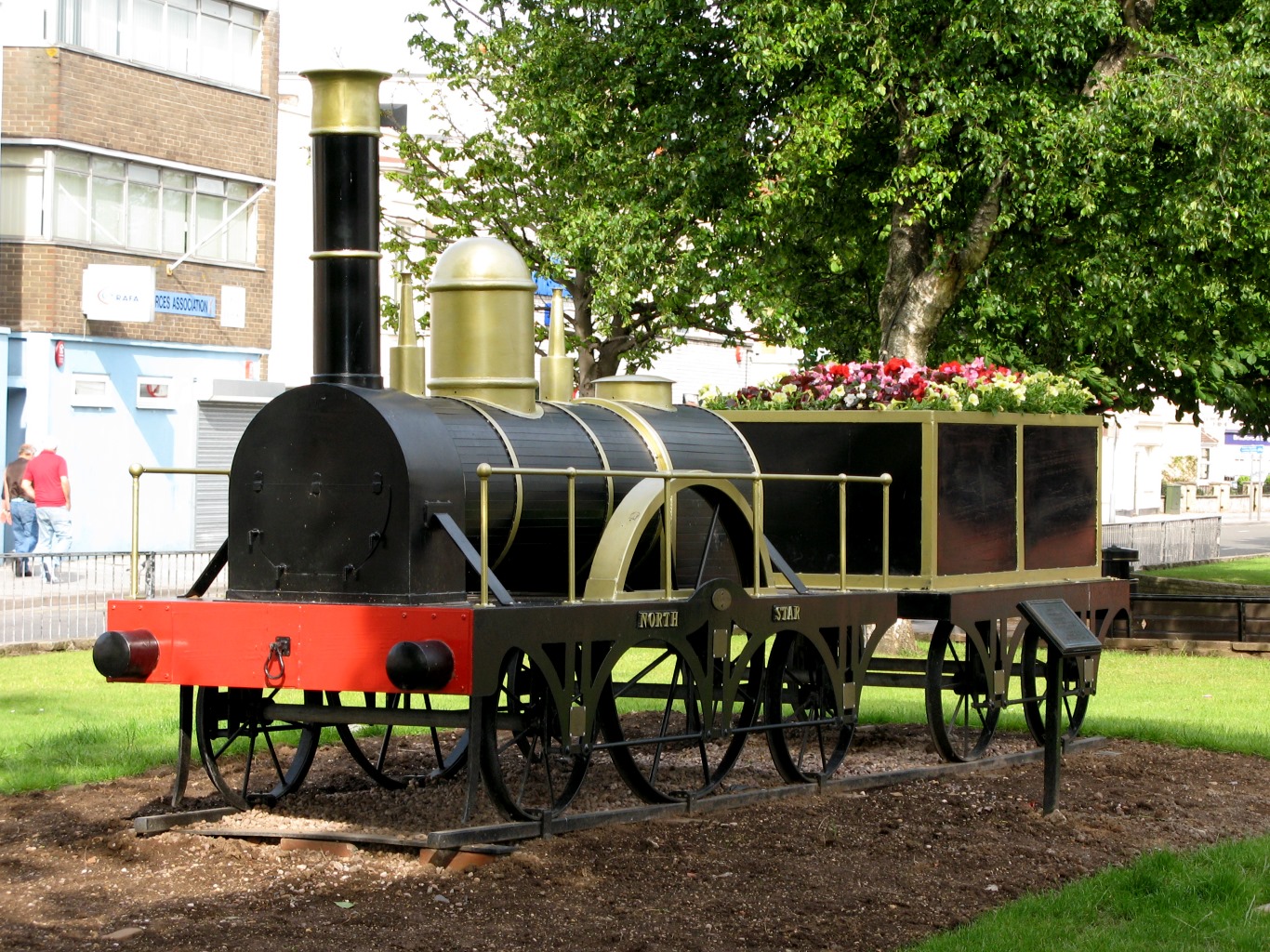|
Worle
Worle ( ) is a large village in North Somerset which is joined to the seaside town of Weston-super-Mare on its western edge. It, however, maintains a very separate identity, and may now be bigger than its more famous neighbour. Worle pre-dates Weston and was mentioned in the Domesday Book of 1086. In the book, it is said that Worle was owned by Walter of Douai, and consisted of and valued at 6.5 hides. "Walter of Douai holds of the King, Worle. Edgar held it in the time of King Edward, and gelded for six hides and a half." The parish church of St Martin's sits on the side of Worlebury Hill and overlooks the village. History The name was possibly formed from the Old English ''Wor + leah'' meaning 'wood or clearing frequented by grouse', or perhaps 'moor meadow'. The parish was part of the Winterstoke Hundred. Worle has grown dramatically in the last 40 years. That initial development in the 1970s and 1980s included a large number of houses, a Sainsburys supermarket, a secondar ... [...More Info...] [...Related Items...] OR: [Wikipedia] [Google] [Baidu] |
Worle Railway Station
Worle railway station, on the Bristol to Exeter line, serves the Worle, West Wick and St Georges suburbs of Weston-super-Mare in North Somerset, England. It is west of Bristol Temple Meads railway station, and from London Paddington. Its three-letter station code is WOR. It was opened in 1990 by British Rail. The station, which has two platforms, is managed by Great Western Railway, the seventh company to be responsible for the station, and the third franchise since privatisation in 1997. They provide all train services at the station, mainly half hourly services between and , and between and . The station's car park was significantly expanded in 2013. The line through Worle is not electrified, but there is significant local support for it to be electrified as part of the 21st-century modernisation of the Great Western Main Line, partly motivated by worries that unless the line is electrified, Weston-super-Mare will lose direct services to London. Description Worle ... [...More Info...] [...Related Items...] OR: [Wikipedia] [Google] [Baidu] |
Weston-super-Mare
Weston-super-Mare, also known simply as Weston, is a seaside town in North Somerset, England. It lies by the Bristol Channel south-west of Bristol between Worlebury Hill and Bleadon Hill. It includes the suburbs of Mead Vale, Milton, Oldmixon, West Wick, Worlebury, Uphill and Worle. Its population at the 2011 census was 76,143. Since 1983, Weston has been twinned with Hildesheim in Germany. The local area has been occupied since the Iron Age. It was still a small village until the 19th century when it developed as a seaside resort. A railway station and two piers were built. In the second half of the 20th century it was connected to the M5 motorway but the number of people holidaying in the town declined and some local industries closed, although the number of day visitors has risen. Attractions include The Helicopter Museum, Weston Museum, and the Grand Pier. Cultural venues include The Playhouse, the Winter Gardens and the Blakehay Theatre. The Bristol Channel has a l ... [...More Info...] [...Related Items...] OR: [Wikipedia] [Google] [Baidu] |
Worlebury Hill
Worlebury Hill is the name given to an upland area lying between the flatlands of Weston-super-Mare and the Kewstoke area of North Somerset, England. Worlebury Hill's rises from sea level to its highest point of , and the western end of the hill forms a peninsula, jutting out into the Bristol Channel, between Weston Bay and Sand Bay. A toll road follows the coast around the hill from Sand Bay in the north to the now derelict Birnbeck Pier in the west, although tolls are not currently collected on the road. Worlebury Golf Club is situated on the Hill and the area is known for being one of the wealthiest areas in the county of Somerset. History The hill is the site of the Iron Age hillfort Worlebury Camp which occupies the western end of the wooded east-west ridge. It is a partly multi-vallate hillfort with stone-built ramparts. Excavated in the nineteenth century, structural details of several storage pits and the ramparts were discovered. The site is a Scheduled Monument (101 ... [...More Info...] [...Related Items...] OR: [Wikipedia] [Google] [Baidu] |
Puxton And Worle Railway Station
There are 22 disused railway stations in the between and , 12 of which have structures that can still be seen from passing trains. Most were closed in the 1960s but four of them, especially around , were replaced by stations on new sites. 13 stations remain open on the line today, but there have been proposals to reopen stations at Cullompton and Wellington. Background The route was opened by the Bristol and Exeter Railway in stages between 1841 and 1844. In 1876 this company was amalgamated with the Great Western Railway which, in turn, was nationalised into British Railways in 1948. It is now owned by Network Rail. Apart from the temporary station at Beam Bridge which was only used for a year, the earliest closures were in the Weston-super-Mare area in order to provide new facilities for the traffic to that town, which was much greater than predicted when the line was planned. The majority of the remaining closures followed Dr Beeching's ''Reshaping of British Railways'' r ... [...More Info...] [...Related Items...] OR: [Wikipedia] [Google] [Baidu] |
Church Of St Martin, Worle
The Church of St Martin in Worle within the English county of Somerset has Norman origins. It is a Grade II* listed building. History St Martin's Church was built in 1125 and rebuilt during the 14th and 15th centuries, with major restoration and extension work in 1870. It is a Grade II* listed building. Following the dissolution of the monasteries the carved misericords from Woodspring Priory were moved to St Martin's. The Church is now ecumenical, with Methodist as well as Church of England ministers. The parish and benefice of Worle is within the Diocese of Bath and Wells. Architecture The stone building has a tiled roof and consists of a four bay nave, chancel and north aisle. The three-stage tower is supported by angle buttresses. See also * List of ecclesiastical parishes in the Diocese of Bath and Wells The ecclesiastical parishes within the Diocese of Bath and Wells cover the majority of the ceremonial counties of England, English county of Somerset and small a ... [...More Info...] [...Related Items...] OR: [Wikipedia] [Google] [Baidu] |
Weston-super-Mare Railway Station
Weston-super-Mare railway station serves the seaside town of Weston-super-Mare in North Somerset, England. It is situated on a loop off the main Bristol to Taunton Line, from the zero point at via Box. The station is operated by Great Western Railway. It consists of two platforms linked by a covered footbridge which is also used as a public footpath between roads on either side of the station. Trains may use either platform in either direction, and many services are booked to pass each other at the station. History 1841 station The Bristol and Exeter Railway arrived in Weston-super-Mare on 14 June 1841. This was not the route that serves today's station, but rather a single-track branch line from Weston Junction railway station, midway between the present-day Worle and Uphill junctions, which terminated at a small station in Regent Street close to the High Street. The trains on this first branch line were made up of two or three small carriages which were hauled by ... [...More Info...] [...Related Items...] OR: [Wikipedia] [Google] [Baidu] |
Weston, Clevedon And Portishead Railway
The Weston, Clevedon and Portishead Light Railway (WC&PR) was a standard gauge light railway in Somerset, England. It was conceived as a tramway in the 1880s, opening between the coastal towns of Weston-super-Mare and Clevedon in 1897 and completed to Portishead in 1907. It closed in 1940. History Construction and opening A broad gauge railway from Portishead to Clevedon was proposed in 1865 to connect with the Bristol and Portishead Railway which was then under construction. If it had been built it would have allowed direct services from Clevedon to Bristol which would have avoided the need to change at . A new proposal in 1884 envisaged the three towns being linked by a 'Weston-super-Mare, Clevedon and Portishead Tramway'. This standard gauge line would run along the street from the Boulevard to Ashcombe Road in Weston-super-Mare and then off-road (apart from numerous level crossings) from there to Portishead. An Act of Parliament authorising its construction was passed o ... [...More Info...] [...Related Items...] OR: [Wikipedia] [Google] [Baidu] |
Bristol And Exeter Railway
The Bristol & Exeter Railway (B&ER) was an English railway company formed to connect Bristol and Exeter. It was built on the broad gauge and its engineer was Isambard Kingdom Brunel. It opened in stages between 1841 and 1844. It was allied with the Great Western Railway (GWR), which built its main line between London and Bristol, and in time formed part of a through route between London and Cornwall. It became involved in the gauge wars, a protracted and expensive attempt to secure territory against rival companies supported by the London and South Western Railway (LSWR) which used the narrow gauge, later referred to as ''standard gauge''. At first it contracted with the GWR for that company to work the line, avoiding the expense of acquiring locomotives, but after that arrangement expired in 1849, the B&ER operated its own line. It opened a number of branches within the general area it served: to Clevedon, Cheddar, Wells, Weston-super-Mare, Chard, Yeovil and Tiverton. The B ... [...More Info...] [...Related Items...] OR: [Wikipedia] [Google] [Baidu] |
Weston-super-Mare (UK Parliament Constituency)
Weston-super-Mare is a constituency represented in the House of Commons of the UK Parliament since 2005 by John Penrose, a Conservative. History The seat was created under the Representation of the People Act 1918. Its forerunner was the North Somerset division created in 1885. The by-election of 1934 was triggered by the acceptance of the appointment of Lord Erskine to the position of Governor of Madras Presidency, that of 1958 by the death of Ian Orr-Ewing and that of 1969 by the death of David Webster. ;Political history The seat has alternated in representation between 1992 and 2005: in the election of 1997 the fresh Conservative candidate, Margaret Daly failed to hold the seat which led to Weston Super Mare's first marginal majority since 1923, obtained by Brian Cotter, a Liberal Democrat. Between 1997 and 2010, all the majorities in the constituency were lower than 3,000 votes, remaining strongly marginal and seeing in 2005 Cotter lose the seat to John Penrose. Follow ... [...More Info...] [...Related Items...] OR: [Wikipedia] [Google] [Baidu] |
North Somerset
North Somerset is a unitary authorities of England, unitary district in Somerset, South West England. Whilst its area covers part of the Ceremonial counties of England, ceremonial county of Somerset, it is administered independently of the non-metropolitan county. Its administrative headquarters is in the town hall in Weston-super-Mare. North Somerset, which was renamed from the Woodspring district in 1996, borders the city and county of Bristol and the local government areas of Bath and North East Somerset, Mendip District, Mendip and Sedgemoor. The area comprises the parliamentary constituencies of Weston-super-Mare (UK Parliament constituency), Weston-super-Mare and North Somerset (UK Parliament constituency), North Somerset. History Between 1 April 1974 and 31 March 1996, this area was the Woodspring Districts of England, district of the county of Avon (named after Woodspring Priory, an isolated medieval church near the coast just north east of Weston-super-Mare). The dist ... [...More Info...] [...Related Items...] OR: [Wikipedia] [Google] [Baidu] |
Winterstoke
The Hundred of Winterstoke is one of the 40 historical Hundreds in the ceremonial county of Somerset, England, dating from before the Norman conquest during the Anglo-Saxon era although exact dates are unknown. Each hundred had a 'fyrd', which acted as the local defence force and a court which was responsible for the maintenance of the frankpledge system. They also formed a unit for the collection of taxes. The role of the hundred court was described in the Dooms (laws) of King Edgar. The name of the hundred was normally that of its meeting-place. It consisted of the ancient parishes of: Axbridge, Badgworth, Banwell, Blagdon, Bleadon, Cheddar, Christon, Churchill, Compton Bishop, Congresbury, East Harptree, Hutton, Kenn, Kewstoke, Locking, Loxton, Puxton, Rodney Stoke, Rowberrow, Shipham, Uphill, Weston-super-Mare, Wick St Lawrence, Winscombe, Worle, Yatton. It also included the extra parochial area of Charterhouse-on-Mendip, covering in total approximately . The hundred ... [...More Info...] [...Related Items...] OR: [Wikipedia] [Google] [Baidu] |
Walter Of Douai
Walter of Douai (Old Norman: ''Wautier de Douai'') (born c.1046, died: c.1107) was a Norman knight, probably at the Battle of Hastings, and a major landowner in South West England after the Norman Conquest, being feudal baron of Bampton in Devon and of Castle Cary in Somerset. He is given various names and titles in different sources including: Walter (or Walschin or Walscin) de Douai. Douai is sometimes written as Dowai. He has also been called Gautier de Douai and later Walter the Fleming. Family Walter was the son of Urso of Douai, that was then a fiefdom of the counts of Flanders and now is a commune in the Nord département in northern France. Located on the river Scarpe some 40 km from Lille and 25 km from Arras. He married Emma (or Eddeva) of Devon, and may have had two children: Richilde de Douai and Ralph (of Tintinhull) Lovel. He also had a second wife. His son Robert built Bampton Castle in Devon.Dunning, 1995 page 32-33 Norman Conquest Walter likely fou ... [...More Info...] [...Related Items...] OR: [Wikipedia] [Google] [Baidu] |
.jpg)




